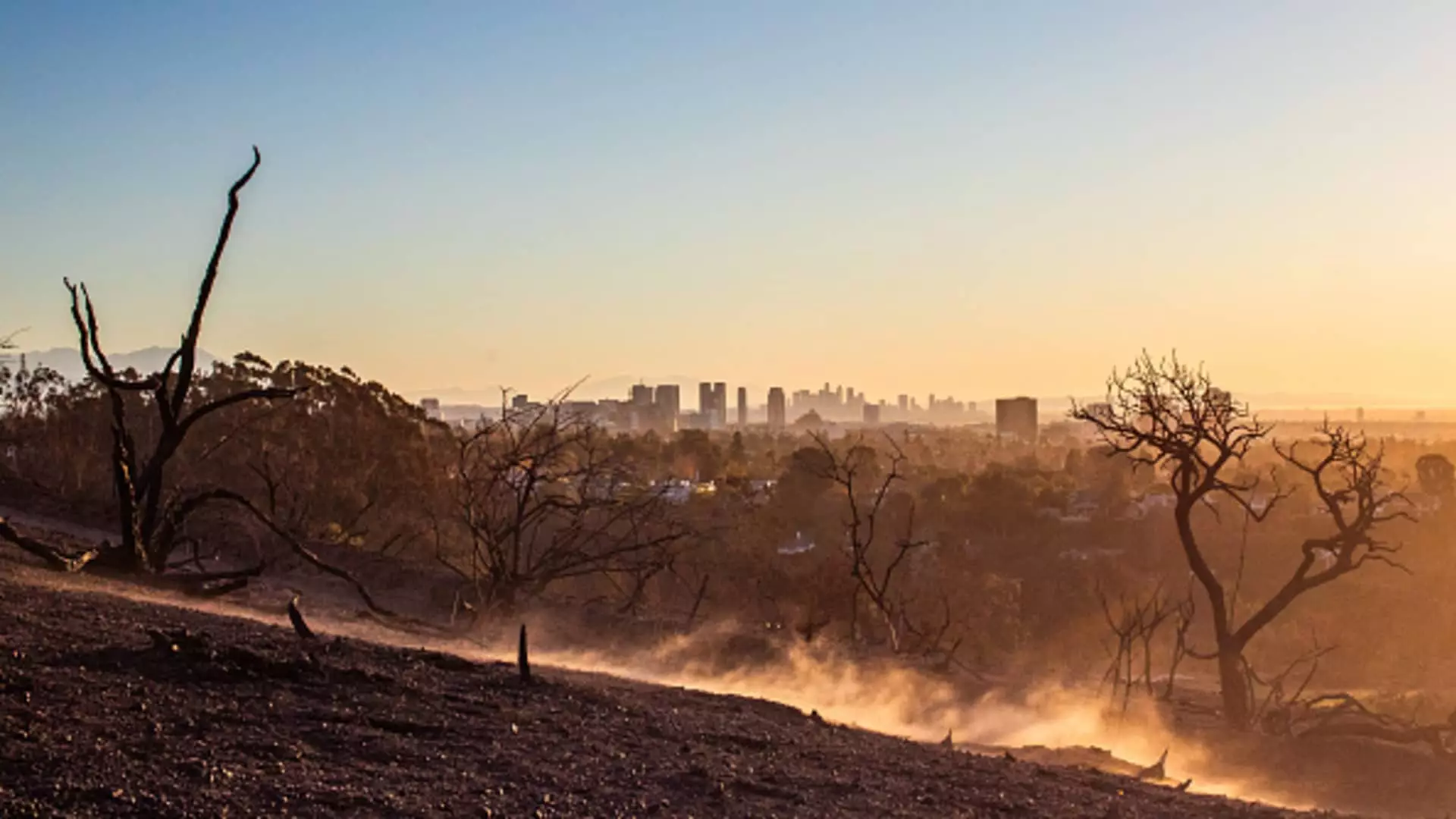The Rising Tide of Insurance Premiums: Understanding the Impacts of Natural Disasters

Natural disasters, particularly wildfires, are causing significant upheaval in the insurance industry. The recent catastrophic wildfires in Los Angeles are not just destructive in terms of property loss; they are poised to create unprecedented economic repercussions for homeowners — particularly in California, where insurance premiums have been surging for quite some time now. Analysts warn that the L.A. wildfires could incur damage costing upwards of $20 billion, a figure that signals just how dire the situation is for both insurers and policyholders.
As Californians grapple with the direct impacts of heightened natural disasters, insurance costs continue to escalate. This uptick can largely be attributed to two intertwined factors: the rising frequency and intensity of natural calamities and the urgent need for insurers to cover their increasing liabilities. Patrick Douville, a vice president at Morningstar, emphasizes the necessity for risk-based pricing, revealing that insurance premiums are likely to increase significantly. This trend could potentially curtail property values, with some homeowners finding themselves without coverage altogether.
In 2024, California’s Department of Insurance approved regulations aimed at increasing premium rates in wildfire-prone areas, effectively laying the groundwork for a market where coverage becomes increasingly unaffordable. Reports suggest that some insurers have raised rates by as much as 34%, underscoring the inevitability of escalating costs. Moreover, studies indicate that filing just one fire claim could elevate premiums by an average of 29%, while two claims could witness a staggering 60% increase.
If you reside outside California, you might think you’re safe from the repercussions of the state’s wildfires. Janet Ruiz from the Insurance Information Institute argues that insurance premiums within one state are not directly influenced by disasters in another. Each state regulates its insurance market independently, thus providing a degree of insulation against out-of-state losses. However, a contradiction arises: when insurers face restrictions in adjusting rates within heavily regulated states like California, they often compensate by inflating rates in less-regulated areas, leading to a disjointed system where risk doesn’t always align with price.
This perspective is corroborated by a 2021 study conducted by economists at prestigious institutions, highlighting concerns over the sustainability of the current regulatory framework, especially in a climate where natural disasters are becoming more frequent and severe. As insurers operate across multiple states, they inherently spread their risk — and costs — creating a ripple effect that may lead to rising rates nationwide, even if localized catastrophes are not directly causative.
The implications of rising insurance rates extend beyond immediate financial burdens, as many homeowners remain underinsured due to escalating rebuilding costs. The reality is that the price to reconstruct properties has skyrocketed. For example, what might have previously cost $166 per square foot to rebuild could now run over $300. With insurance policies often renewed without a recalibration of coverage limits, many homeowners may inadvertently find themselves vulnerable to significant financial loss if disaster strikes.
Experts recommend that homeowners reassess their coverage annually, especially with the prospect of extreme weather events looming larger in the public consciousness. Ruiz suggests homeowners consult a contractor to obtain an updated estimate on rebuilding costs. This proactive approach can serve as an essential safeguard against the inadequacies of current policies.
Last year alone, natural disasters caused damages totaling $1 billion each across 27 different events, making it clear that environmental threats are rising steeply. Alarmingly, nearly half of all U.S. homes are now at risk from extreme environmental events, according to recent data. As premiums jumped 33.8% between 2018 and 2023, the trend suggests that the insurance landscape is only likely to become more convoluted. Households exposed to climate risks may face premiums climbing $700 higher by 2053, forcing homeowners to navigate an increasingly complex market.
The national average for home insurance has reached $2,181 per year for a typical policy, resulting in mounting anxiety among homeowners regarding their financial well-being as wildfires, floods, and other catastrophic events become ever-more commonplace. Therefore, it becomes crucial for both insurers and homeowners to adapt to emerging risks effectively.
The interplay of natural disasters, regulatory mechanisms, and market dynamics is shaping a new reality for insurance premiums in the United States. Homeowners must remain vigilant, continuously reassessing their policies and adjusting their coverage to ensure they are adequately protected against this evolving landscape. Failure to do so could lead to devastating financial consequences in the event of a disaster. As the frequency and severity of climate-related events surge, it is crucial that collective awareness and proactive measures like enhanced insurance evaluations become standard practices for safeguarding future investments.





